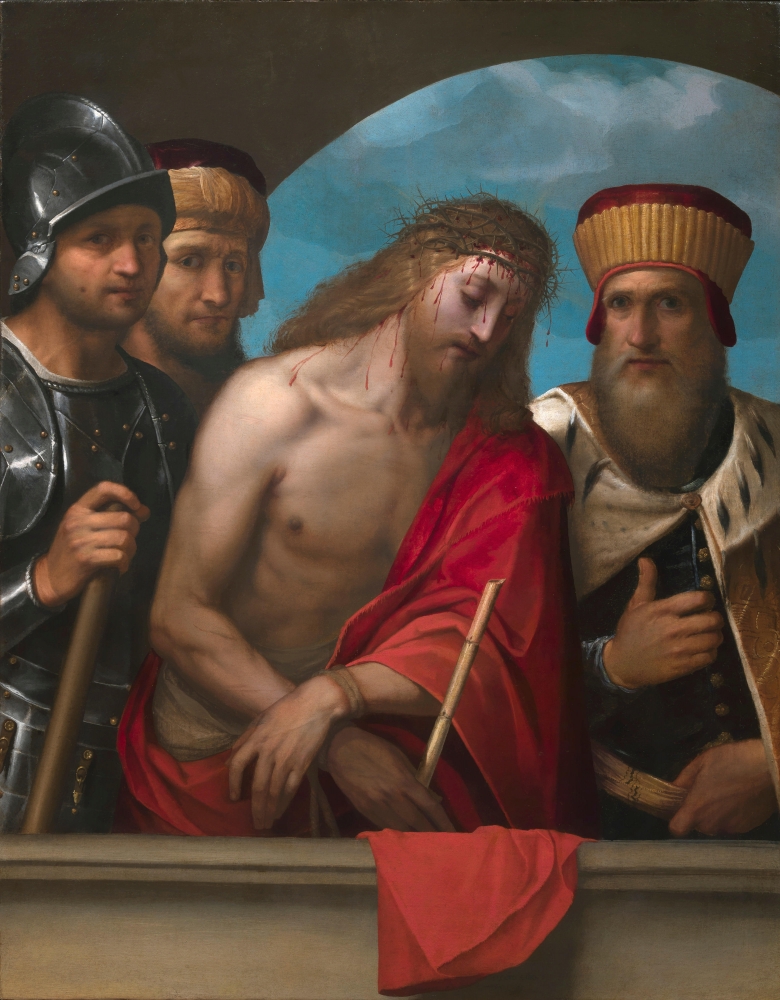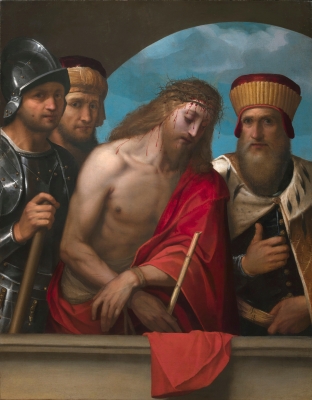Private collection, Italy;
Anonymous sale, Milan, Christie’s, 27 May 2010, lot 91 (as Scuola Ferrarese del secolo XVI);
With Jean-Luc Baroni Ltd, London, 2011, from whom acquired by the present owner.
Click here to download the factsheet
Jacopo Ligozzi’s long career was mostly spent in Florence, but he trained alongside his father in Verona and in Trento. Having married in 1572, by 1577, he had left his wife and child in Verona and was being described by Ulisse Aldrovandi as an ‘eccellente pittore’ working for the court in Florence. Ligozzi spent the next ten years working principally for Francesco I de’ Medici, until the latter’s early death in 1587. These years were the most prestigious and successful of his career. Ligozzi’s particular skills as a painter and exceptional miniaturist paralleled Francesco I’s fascination with science and nature and his wish both for precious forms of art and accurate studies of natural specimens. Ligozzi’s versatility as an artist helped him, however, to withstand the upheavals in taste and function which came with the three successive Medici Dukes for whom he produced work: Ferdinando I, Cosimo II and Ferdinando II.[i]
Under Francesco I’s orders, Ligozzi is described, again by Aldrovandi, as working day and night to produce tempera paintings of plants and animals. In 1583 he was appointed as drawing master to the ladies of the court, including Maria de’ Medici, and later to the children also, a position which he continued in for decades. He provided drawings for the engraver Andrea Andreani, executed large scale paintings and altarpieces, participated in the fresco decoration of the Villa Medicea at Pratolino and painted five works specifically for the Tribuna of the Uffizi. Dating from this first period are also the first examples of Ligozzi’s macabre works on themes of death and mortal sin: the so-called Strangolatrice in the Uffizi and the Allegory of Redemption now at Locko Park in England.
With the death of Francesco I, Ligozzi appears to have experienced some insecurity in his position and finances: his family had joined him in Florence and now included seven children. He moved out of the Casino di San Marco and into a studio in the Uffizi, housing his family in lodgings and, meanwhile, importuning Ferdinando I to honour Francesco’s debts for earlier commissions. Ligozzi’s first major project for Ferdinando was an Allegory of Tuscany made for the entrance of the Palazzo Vecchio on the occasion of the arrival of the new Grand Duchess, Christina of Lorraine, in April of 1589. Smaller works such as a portrait of Marie de’ Medici followed. Ligozzi’s series of elaborate drawings illustrating the Seven Deadly Sins date from around 1590 and over the next two years, seemingly once again well established as a court painter producing a variety of work from his studio, Ligozzi painted the two huge historical scenes for the Salone dei Cinquecento in the Palazzo Vecchio.
After this point, Ligozzi’s role seems again to have changed. The Uffizi studio was closed and he began working independently, taking on more commissions for altarpieces and other religious paintings. In this period Lucilla Conigliello has pointed out how Ligozzi looked beyond Florence for influence, turning towards Venice and Veronese for the grand altarpiece of the Martyrdom of St Dorothy in the church of San Francesco in Pescia, and towards Bologna and the Carracci for his interest in the harsh realities of poverty as illustrated in the Miracle of St Diego painted for the Ognissanti.[ii]
In 1594, Ligozzi was elected as Provveditore (Director) of the Accademia del Disegno and during these years, in which he associated with painters and sculptors such as Giovanni Battista Paggi and Giambologna, he also appears to have occupied a position of some influence as a form of go-between for agents wishing to sell works of art to the Medici. At the same time, Ligozzi extended his own range of commissions and received orders from the Augsburg agent, Phillip Hainhofer, and the Court of Phillip II of Pomerania.
Despite a considerable production of work in the early 1590s, including a commission from Ferdinand I for an Assumption to be given to Isabella of Spain, Ligozzi seems to have encountered further financial issues. He was denounced before the tribune of the Accademia for incurring debts. It appears that he was a difficult character, prone to vindictiveness, and there are records of unpaid bills for studio expenses, of disgruntled assistants, of broken contracts, and interrupted patronage: Ligozzi’s personal entreaties to Ferdinand I to employ him once again as a court artist came to nothing. Yet the first years of the 17th century show him to have been intensely busy, producing designs for pietra dura decoration, considerable numbers of devotional pictures, fine, miniaturist drawings of portraits and precious objects, such as the oil on copper within a highly decorated altar made in 1608 which is now in Oberlin. He received private commissions from individual patrons and a request for a grand series of designs for objects and paintings, particularly copies of important works from the Medici collections, from the Gonzaga court at Mantua. This latter commission, once again, ended acrimoniously. Nevertheless work continued: more altarpieces, participation in the cycle of frescoes on Franciscan themes for the church of San Salvatore di Ognissanto, the journey to La Verna in 1607, the ceiling decoration of the church of Santo Stefano in Pisa and various smaller scale, devotional or meditational works. Such constant activity perhaps encouraged Cosimo II to bring Ligozzi back to the confines of the court in 1620, and though Cosimo died in 1621, Ligozzi had been given entitlement to an annual stipend which continued until his own death five years later.
Ligozzi’s religious life is described by Conigliello as being rigorously observant and devotional. He associated with people of the church: a Cappuchin monk is said to have saved his wife’s life, and three of his children took Holy Orders. The discovery of the present remarkable and powerful work is therefore a fascinating addition to Ligozzi’s meditations upon Death and upon the subject of Christ’s Passion. In the last years of his career, while he was mostly occupied with designs for decorations for the court, Ligozzi produced a series of paintings on the subject of The Passion. The core works within this group are the four canvases executed in 1622 for Cristina di Lorena to be installed at Poggio Imperiale, three of which survive.[iii] Conigliello considers that another Ecce Homo at Stonyhurst College, in England, of horizontal format and similar in scale to the Poggio Imperiale pictures belongs to the same moment. The Christ in the Stonyhurst picture is very similar in conception to that in the present work; the angle of the heads, the dreadful bleeding caused by the crown of thorns, the thin hands bound at the wrist. But the vertical format and smaller number of figures which define the present work are markedly similar to another composition by Ligozzi known through a print engraved by Raphael Sadelar, which bears the legend Ex Augusto Museo Perill. Is Comitis Avg.ni de Iusis Deprompt / Jacobus Ligotius Veron. Is pinxit... Anno.[iv] The present picture, signed and dated 1593 is, therefore, the earliest of the surviving group of works on this subject and it appears to have remained a touchstone for Ligozzi in his meditations on the theme. The echoes of Venetian painting in the vivid sky (seen through the arch) and the shadowed, Giorgionesque faces of the soldiers are notable when compared with other works from this period, such as the aforementioned Martyrdom of St Dorothy. The intense and vivid colours, the vermillion red of the crisply defined cloak, the white glint of the armour and the soft modelling of Christ’s skin are, however, distinctly Florentine. Meanwhile, the preoccupation with pain and death, which clearly haunted Ligozzi throughout his life, is also a forceful part of this composition and recalls the gruesome allegorical drawings inspired by Northern religious art which Ligozzi produced around 1590. A particularly powerful element in this grand painting is the engagement with the viewer. The soldiers look out as if to challenge us, to witness and respond to Christ’s suffering, while Pontius Pilate with his hand lifted and thumb raised, fixes us with a stare while asking for our verdict: should he condemn Christ, or pardon him?
Footnotes
[i]
L. Conigliello, Jacopo Ligozzi: le Vedute del Sacro monte della Verna, i dipinti di Poppi e Bibbiena, exh. cat., Poppi 1992, p. 23.
[ii]
Conigliello 1992, pp. 29-30, figs. 24 & 25.
[iii] See, for example, Conigliello 1992, fig. 54.
[iv] https://www.britishmuseum.org/collection/object/P_X-1-109

